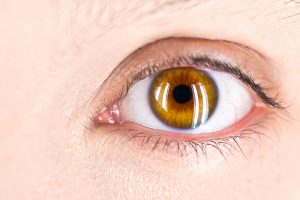What is
Diabetic macular oedema (EMD) is, together with diabetic retinopathy (DR), one of the most common ocular complications associated with diabetic disease. In Italy, there are approximately 200,000 people suffering from EMD and the prevalence of the disease is set to grow along with that of diabetes.
To date, approximately 8% of the world's population is affected by diabetic pathology, which precisely for this reason it is considered the week cause of disability worldwide.
EMD occurs following a accumulation of fluid in the central portion of the retina, the macula, the portion most sensitive to light stimuli and responsible for colour vision. EMD represents the most advanced stage of DR, an ocular condition that can cause partial or total impairment of visual capacity.
Diabetic macular oedema can take many forms forms, including:
-EDM focal, which occurs only in certain areas as a result of alterations in certain parts of the ocular microcirculation;
-EDM widespread, which is the result of generalised capillary dysfunction accompanied by a diffuse breakdown of the blood-retinal barrier.
Risk factors
Risk factors associated with the onset of EMD are numerous, among them:
-the duration of diabetic pathology;
-Hypertension;
-hyperlipidaemia;
-smoking;
-diabetic nephropathy.
Symptoms
People suffering from EMD are subject to a gradual decrease in vision which is accompanied by a vision deformation. The images and subjects appear wavy, the contours blurred and the colours altered. These symptoms affect the normal course of daily activities.
Prevention
Scientific evidence shows that through early diagnosis and intervention, theRD and l'EMD are diabetic complications that can be prevented and/or delayed through regular eye check-ups, as indicated in the guidelines for the management of the diabetic patient (http://care.diabetesjournals.org/content/41/Supplement_1/S1). However, according to recent data (ARNO Report 2017), only a small percentage of diabetic patients undergo a thorough eye examination and most of these even ignore the condition.
For this reason, the National Institute for Health and Care Excellence (NICE), the UK health authority, has drawn up a number of measures for the management of diabetes, and in particular type 2 diabetes, to prevent other complications from being associated with this disease.
In particular, people with diabetes should:
-monitor blood glucose levels: Clinical studies have shown that subjects with an optimal glycaemic level, compared to those with impaired values, show a reduction in the development of DR, as well as in the progression to EMD;
-control blood lipid concentrationstwo different epidemiological surveys, the Winsconsin Epidemiologic Study of Diabetic Retinopathy (WESDR) and theEarly Treatment Diabetic Retinopathy Study (ETDRS), showed that in the subjects with low cholesterol levels, the formation of hard exudates, which cause visual loss, was significantly reduced;
-monitoring blood pressure: hypertension increases the risk of both the onset and progression of DR. Moreover, very high diastolic blood pressure values are also associated with an increased risk of the onset of EMD;
-take regular in-depth eye examinationsIn particular, the diabetic patient should have an ophthalmological examination immediately after the diagnosis of diabetic disease; for patients with already diagnosed DR, regular examinations at annual intervals are recommended.
Prevention of retinal complications of diabetes is therefore possible adopting a certain lifestyle and undergoing regularly to specialist medical examinations. In addition, a proper communication between diabetologists/general practitioners/oculists and patients as it is an essential requirement for minimising the occurrence of diabetes-related eye complications.
Sources:
- ARNO Diabetes Report. The care profile of the population with diabetes. Report 2017, Volume XXX.
-Action on diabetic macular oedema: achieving optimal patient management in treating visual impairment due to diabetic eye disease. Guideline. Official journal of The Royal College of Ophthalmologists. Eye (2017).
-The Prevention and Treatment of Retinal Complications in Diabetes. Schorr SG et al. Dtsch Arztebl Int (2016).
Dr. Carmelo Chines
Direttore responsabile

